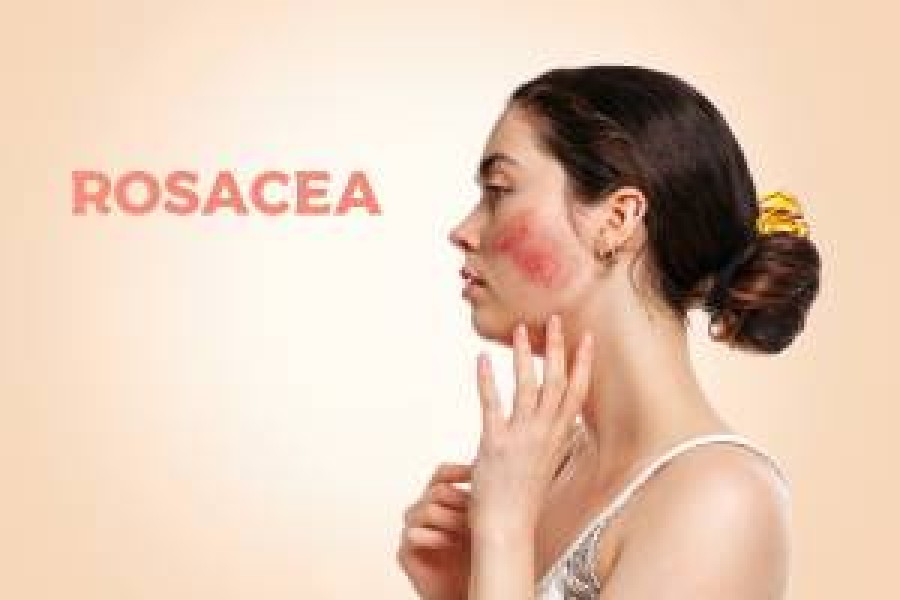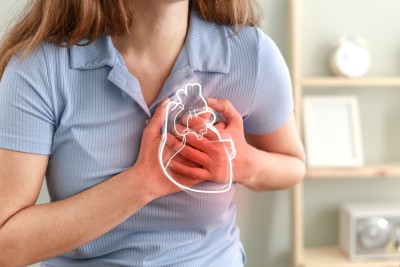Free shipping for orders over 39.00€
What rosacea is and how to treat it

Rosacea is a chronic
skin condition and an autoimmune and multifactorial disease that can affect
both adults and children.
Rosacea occurs more
frequently in people over the age of 30, with fair skin or previous family
history, and sometimes occurs during pregnancy or menopause. Also, rosacea can
have a transient, recurrent, or persistent appearance on the patient's skin.
However, rosacea is
not associated with acne rosacea, a non-communicable rash that appears on the
face's skin, and its original name "rosacea" is considered incorrect
as it is not related to acne.
What
are the rosacea symptoms?
Irritated skin
accompanied by pimples is the main symptom of a patient with rosacea. The nose,
cheeks, and sometimes the eye contour are the facial areas that are primarily
affected, while it is not uncommon that irritation and pimples may appear on
the body and especially on the patient's chest.
Still, flushing -
accompanied by a rapid heartbeat, burning sensation, itching, tingling, or
dizziness – is a key characteristic symptom that occurs in the affected areas.
What should be pointed
out is that on several occasions, the symptoms of rosacea coincide with similar
symptoms of other skin diseases, which is why a thorough examination is needed
to determine that it is the disease in question. In general, the diagnosis can
be complicated since the patient cannot accurately know when the symptoms first
appear to distinguish them from other skin diseases.
What
causes the rosacea outbreak?
Various factors are
associated with the onset of the disease and the exacerbation of symptoms, such
as the existence of hereditary predisposition, hormonal disorders, malfunctions
of the gastrointestinal system as well as severe stress, which burden the body
and trigger the onset of the disease.
In addition, excessive
exposure to the sun and ultraviolet radiation is also aggravating, which is why
patients with rosacea should always use sun protection and sun-protective
products, especially during summer, although the disease can be aggravated by
inappropriate creams or oils.
How
do we treat rosacea?
Truth is that there is
no cure for rosacea rather than procedures for dealing with the symptoms and,
primarily, guidelines for preventing its appearance.
Generally, at the
beginning of the onset of the disease, it is recommended to avoid factors that
trigger the symptoms, such as heat, stress, or nutrition, and it is recommended
to use sunscreen creams of high protection, as well as the application of
locally vasoconstrictive cosmetic creams.
At a more advanced
stage, it is proposed to use topical pharmaceutical mixtures under the dermatologist's
guidance, while the doctor is the one who will indicate the need for surgical
intervention by cauterizing the lesions through diathermy or laser.
However, the patient
can strengthen his body by taking nutritional ingredients or herbs that are associated
with suppressing the appearance of symptoms, such as vitamin A that protects
the skin, turmeric which helps reduce inflammation, and rutin which as a
natural bioflavonoid strengthens the vessels.
On the other hand,
dietary supplements such as ginkgo biloba, green tea, arginine, and cayenne
pepper can aggravate rosacea and should be avoided.
Finally, of great
importance is the intensive care of irritable skin, according to the following
instructions: cleansing of the face without soap, application of personalized
hydration, avoidance of lotions and cosmetics containing alcohol, adoption of
mild skin friction techniques, and daily usage of broad-spectrum sunscreen with
SPF30.
And
what about nutrition?
Diet is of great
importance in the disease's control and treatment, as scientists point out the
existence of foods or beverages that trigger the onset of inflammation through
redness, dilation of blood vessels, and skin thickening.
In fact, foods that
are high in histamine and foods rich in seasonings and spices are considered
prohibited because they trigger the onset of inflammation, while experts
recommend avoiding the consumption of the following foods:
Dairy products and
eggs
Gluten products
Nuts
Citrus
Fruits such as
bananas, plums, avocados, figs
Spicy or acidic
vegetables such as hot peppers, tomatoes, honeydew, onions, and spinach
Coffee, tea, and
alcohol
High glycemic index
foods
Foods with increased
saturated fat content
Seafood
On the contrary, there
are foods that significantly contribute to symptoms' remission:
Sweet potatoes,
broccoli, cauliflower, lettuce, cucumbers, asparagus
Coriander, fennel, and
cardamom
Foods rich in omega-3
fatty acids
Foods rich in vitamin
C
Chicken
Fruits such as grapes,
melons, and mangoes
Turmeric
Complex carbohydrates
and foods with reduced mood content
In conclusion, a
patient must learn to live with rosacea and adjust daily habits in ways that
will prevent its outbreak.






